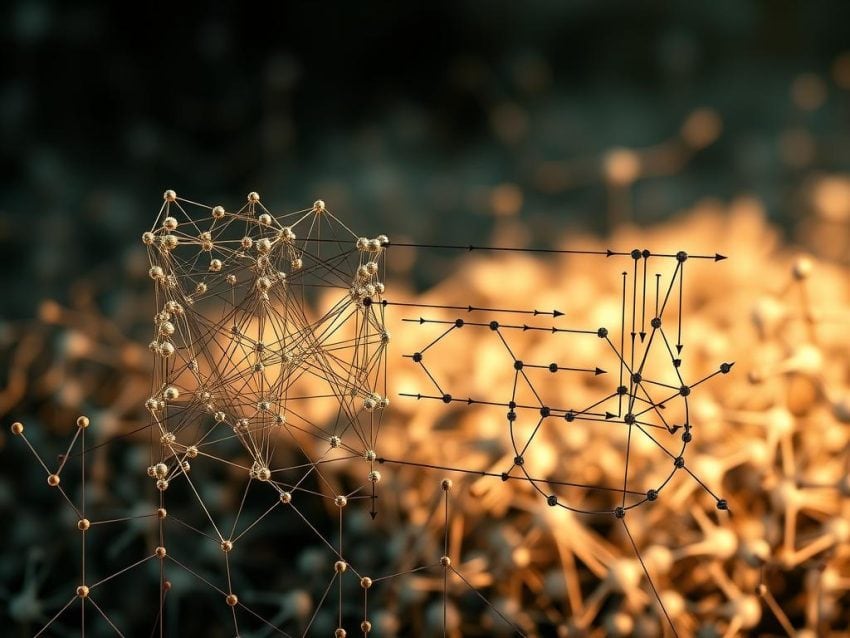Did you know neural networks have been around for over 70 years? They started in 1944 with Warren McCullough and Walter Pitts. Their work was the beginning of artificial intelligence (AI).
Today, these networks are key in AI, helping with speech recognition and machine translation. I want to show you how they work and how they try to think like us. This will help us understand machine intelligence and deep learning better.
Experts like Didier Ganthier say neural networks are important for AI. But, to get artificial general intelligence (AGI), we need more than just these networks.

Key Takeaways
- Neural networks have been in development for over 70 years.
- The Perceptron, the first trainable neural network, was created in 1957.
- Modern deep learning networks can have up to 50 layers due to enhanced processing capabilities.
- They use interconnected artificial neurons to process vast amounts of data, mimicking brain structures.
- Activation functions are key for modeling complex data relationships in neural networks.
Understanding Neural Networks: The Basics
Neural networks are a blend of technology and the human brain’s learning. They mimic how we learn and decide. At the heart of these systems are artificial neurons, which handle and send information.
What is a Neural Network?
Neural networks have three main layers: input, hidden, and output. Each layer is vital for data transformation. The input layer gets the data, hidden layers do complex work, and the output layer shows the results.
Deep neural networks have two or more hidden layers. This lets them find detailed patterns in data.
The Components of Neural Networks
Artificial neurons in hidden layers connect to the previous layer through weighted connections. For example, if the input layer has four neurons, each neuron in the first hidden layer connects with these four, each with its own weight. This setup helps the network learn from data over time.
Activation functions add complexity by introducing non-linearity. They decide if a neuron should activate based on the input. Common functions include ReLU, sigmoid, and softmax, each for different tasks.
The training process includes feedforward and backpropagation. Feedforward moves data through layers, with each neuron processing and passing it on. Backpropagation adjusts weights to reduce errors, using optimization techniques. This improves predictions and accuracy.
Neural Networks and Deep Learning: Mimicking Human Cognition
Neural networks connect artificial intelligence to human thinking. They use brain concepts to understand and process lots of data. This helps machines make decisions like humans do.
How Neural Networks Resemble the Human Brain
Neural networks have nodes that work like brain cells. They can handle and share information well. Studies show that over 11,000 networks tried to mimic human spatial awareness.
But, only 10% of them got it right. This shows how hard it is for machines to think like us without strict rules.
Learning Mechanisms in Neural Networks
Neural networks learn by adjusting their connections based on data. This is like how our brains change with new experiences. They get better over time, just like us.
Even with their limits, these networks are key to AI progress. They help us work towards making machines as smart as humans. Making machines more flexible has mixed results, but it’s an exciting challenge.
Conclusion
Understanding neural networks is key for those curious about AI and human cognition. These systems mimic the brain’s design. They use layers and learning to process info like we do.
Looking at uses like self-driving cars and speech recognition, we see AI growing fast. It’s changing our tech every day.
But, AI also has its hurdles. I think about the need to decide on hidden layers and the time to train on big data. It’s hard to understand the results too.
These issues show that while AI is promising, it needs work to be better. We must focus on making it more accurate and effective.
As we move forward with AI, knowing about neural networks is a big step. It’s part of reaching artificial general intelligence. Deep learning is making this field even more exciting.
It’s changing marketing and healthcare, among others. By understanding both the good and the bad of neural networks, we can create a smarter world.
